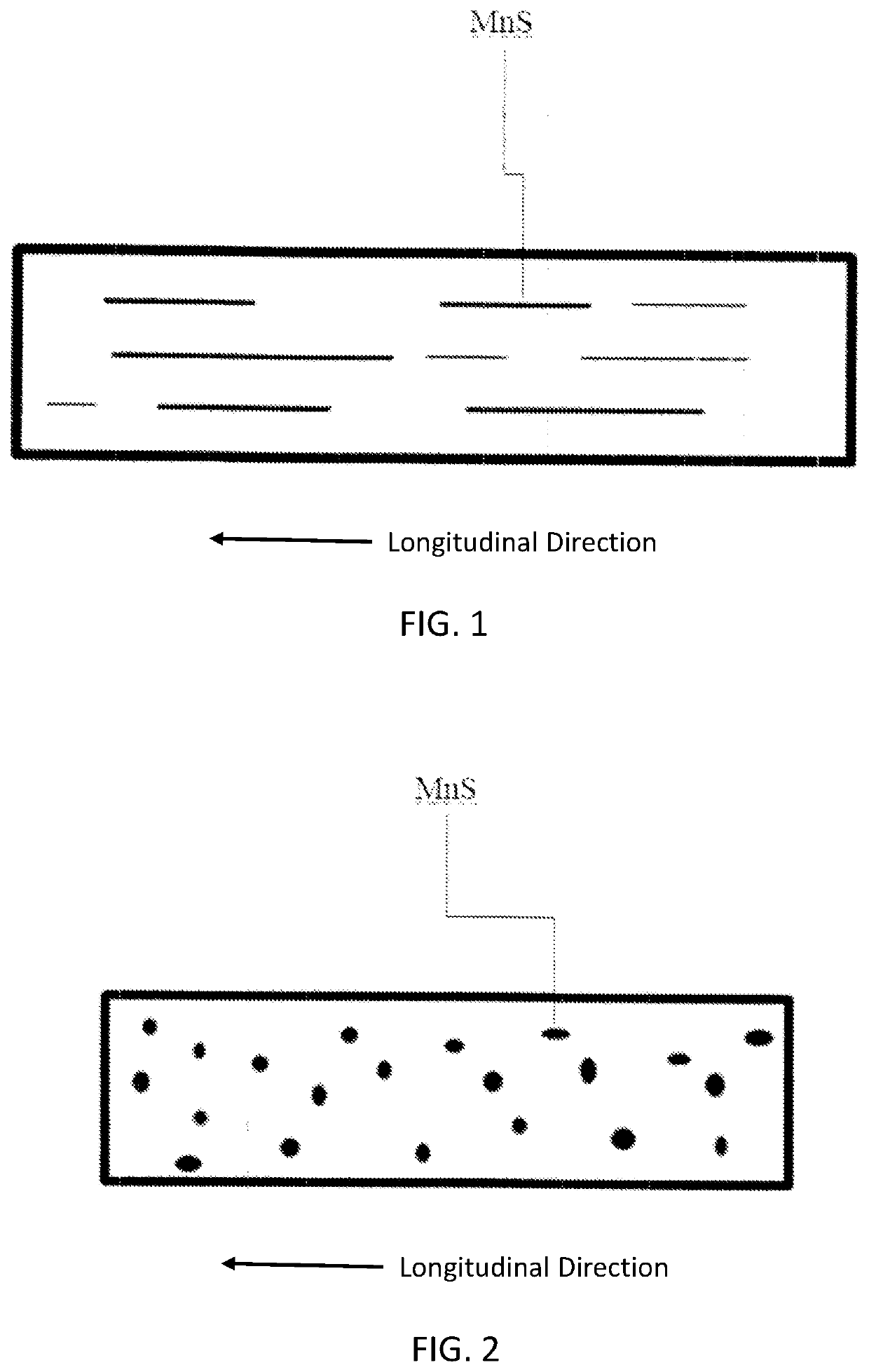Fe-mn absorbable implant alloys with increased degradation rate
a technology of absorbable alloys and fe, which is applied in the field of biodegradable fe — mn alloys, can solve the problems of too slow degradation rate of fe — mn absorbable alloys for moderate sized metallic medical implants such as plates, screws, nails,
- Summary
- Abstract
- Description
- Claims
- Application Information
AI Technical Summary
Benefits of technology
Problems solved by technology
Method used
Image
Examples
example 1
[0081]A Fe—Mn alloy containing 28.3% manganese, 0.08% carbon, 0.0006% nitrogen, <0.01% silicon, <0.005% phosphorous, 0.0057% sulfur, and balance iron was melted in a vacuum induction furnace into an electrode for secondary melting in an electroslag remelting (ESR) furnace. A sulfur content of 0.0012% was measured after ESR. The resulting ingot was upset forged and hot rolled to an intermediate size and cold rolled to a thickness of 0.094 inch thick. The wrought product form contained an elongated MnS secondary phase when the microstructure was examined in the longitudinal orientation.
example 2
[0082]An Fe-28 Mn composition containing greater than >0.15% sulfur was vacuum induction melted and cast into a ceramic investment mold containing multiple shaped cavities. After solidification, the ceramic casting shell was removed, castings were cleaned by grit blasting, and the castings were hot isostatic pressed to eliminate internal porosity. The castings contained a globular MnS secondary phase when the microstructure was examined in both the transverse and longitudinal orientation.
example 3
[0083]A quantity of Fe-28Mn alloy from Example 1 was induction melted and transferred to a water atomizer for the production of irregular metal powder. The water-atomized powder was classified to provide a desired particle size distribution and a polymeric binder was added before consolidation by metal injection molding (MIM). The as-consolidated MIM product form was heated to an intermediate temperature to remove the binder. The MIM product form contained a globular MnS secondary phase when the microstructure was examined in both the transverse and longitudinal orientation.
PUM
| Property | Measurement | Unit |
|---|---|---|
| diameters | aaaaa | aaaaa |
| temperature | aaaaa | aaaaa |
| diameter | aaaaa | aaaaa |
Abstract
Description
Claims
Application Information
 Login to View More
Login to View More - R&D
- Intellectual Property
- Life Sciences
- Materials
- Tech Scout
- Unparalleled Data Quality
- Higher Quality Content
- 60% Fewer Hallucinations
Browse by: Latest US Patents, China's latest patents, Technical Efficacy Thesaurus, Application Domain, Technology Topic, Popular Technical Reports.
© 2025 PatSnap. All rights reserved.Legal|Privacy policy|Modern Slavery Act Transparency Statement|Sitemap|About US| Contact US: help@patsnap.com

